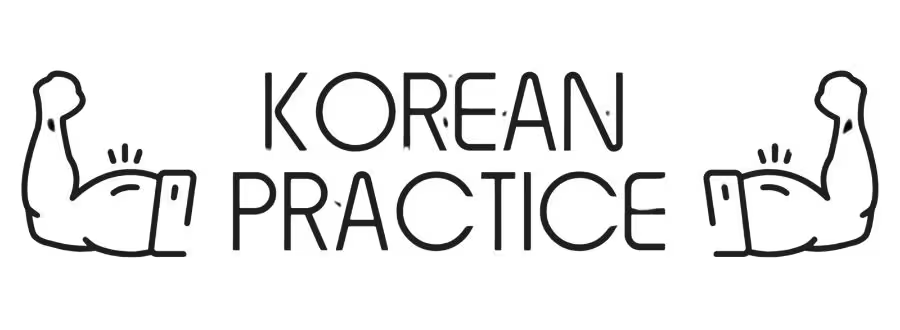Suh ChangWhoon
Written by 서 창훈, a certified Korean teacher with 14+ years of experience in Japan. He previously worked as a government officer, cybersecurity consultant, and English interpreter. Today, he teaches Korean in real classrooms without complex grammar explanations — instead, he trains students’ brains to speak naturally. His unique method is now the foundation of all his Korean courses.
Table of Contents
When people start learning Korean, one of the first polite words they hear in K-dramas, business meetings, or even songs is sajangnim. But what is the sajangnim meaning? How do Korean people really use this word in daily life, and how is it different from English words like “boss” or “sir”?
In this blog post, I will explain everything about sajangnim in Korean and in English, and I will also talk about related words like daepyonim, “sir” in Korean, and greetings like annyeonghaseyo sajangnim. I’ll also share beginner-level example sentences that you can practice right away.
Let’s dive in.
Sajangnim Meaning in Korean
The Korean word sajangnim (사장님) is a respectful title. It usually means “boss” or “company president.”
Sa (사, 社) = company
Jang (장, 長) = head, leader
Nim (님) = polite suffix that shows respect
So literally, sajangnim means “the respected head of the company.”
In daily life, people use it to call the owner of a company, the boss of a shop, or the manager of a place. If you go to a small restaurant in Korea, you might call the owner “sajangnim” even if he is cooking food in the kitchen.
Original Korean Sentence
사장님은 회사에 있어요.
Pronunciation Guide
사장님은 (sa-jang-ni-meun) 회사에 (hwei-sa-e) 있어요 (it-sseo-yo).
Meaning and Context
사장님 (boss) 은 (topic marker; marks the boss as the topic) 회사 (company) 에 (at) 있 (is) 어요 (polite ending; I’m telling you polite and friendly).
English Translation
The boss is at the company.
Literal Translation
Boss is at company.
Did You Eat in Korean? → Discover why this “greeting” is really about care, not food.

Start the Free Course
Still wondering how to read Korean?

This isn’t just another beginner lesson. It’s a complete system designed to change the way you think about Korean — from struggling with letters to reading real sentences, understanding the language, and speaking out loud with confidence.
Sajangnim in English
If we try to find the sajangnim in English, the closest words are:
- Boss – in casual settings
- President / CEO – in a formal business setting
- Owner – when talking about a store or restaurant
But none of these are perfect translations. In English, if you say “boss,” it sounds casual. But in Korean, sajangnim is polite and respectful. That is why many English learners of Korean get confused.
For example, in an American restaurant, you don’t usually call the owner “boss.” But in Korea, calling the restaurant owner sajangnim is very natural and polite.
Korean Honorifics Made Simple → Add ‘시’ and instantly sound respectful—see how!
Sajangnim in Korean Culture
Original Korean Sentence
우리 사장님은 직원들을 좋아해요.
Pronunciation Guide
우리 (u-ri) 사장님은 (sa-jang-ni-meun) 직원들을 (ji-gwon-deu-reul) 좋아해요 (jo-a-hae-yo).
Meaning and Context
우리 (our) 사장님 (boss) 은 (topic marker; marks the boss as the topic) 직원 (emplyee) 들 (plural marker; s) 을 (object marker; object marker; marks employees as the direct object) 좋아해요 (like in a polite and friendly way).
English Translation
Our boss likes the employees.
Literal Translation
Our boss like employees.
Blind Date in Korean (Sogaeting) → Learn the word, the rules, and what to expect.
Start the Story Course
Looking for super easy way to learn Korean?

Most Korean courses stop at grammar. Mine goes beyond — with stories, Story Style Breakdown™, and real practice to help you speak.
Annyeonghaseyo Sajangnim
One very common greeting is annyeonghaseyo sajangnim (안녕하세요 사장님).
This phrase simply means, “Hello, boss.”
But it carries more meaning. By adding sajangnim, you are not only greeting but also showing respect. Imagine walking into your company and smiling at your boss, saying politely, “Annyeonghaseyo sajangnim!” It makes the boss feel recognized and respected.
In dramas, you often hear employees greet their company head this way. In small businesses, customers also say it to shop owners.
Original Korean Sentence
안녕하세요 사장님!
Pronunciation Guide
안녕하세요 (an-nyeong-ha-se-yo) 사장님 (sa-jang-nim)!
Meaning and Context
안녕하세요 (hello in a polite way) 사장님 (boss)!
English Translation
Hello, boss!
White Day in Korean Culture 🍬 → Who gives candy—and why it matters.
Sajangnim vs. Daepyonim Meaning
Another similar word is daepyonim (대표님).
Dae-pyo (대표) = representative
Nim (님) = polite ending
So daepyonim means “the respected representative” of a company.
The difference between sajangnim and daepyonim meaning is small but important:
Sajangnim: owner or president, often used in small or medium companies.
Daepyonim: CEO or official representative of a company, used more in larger or formal companies.
In many cases, people use them interchangeably. But if the company has a more modern structure, daepyonim feels a bit more professional than sajangnim.
Original Korean Sentence
대표님은 회의실에 있어요.
Pronunciation Guide
대표님은 (dae-pyo-ni-meun) 회의실에 (hwei-ui-si-le) 있어요 (it-sseo-yo).
Meaning and Context
대표님 (CEO) 은 (topic marker; marks the CEO as a topic) 회의 (meeting) 실 (room) 에 (in) 있 (is) 어요 (polite ending; I’m telling you polite and friendly).
English Translation
The CEO is in the meeting room.
Literal Translation
CEO is in meeting room.
6 Korean Table Etiquette Mistakes → Avoid these slips and eat like a local.
Sajangnim vs. “Sir” in Korean
Sometimes learners ask: Is sajangnim the same as saying “sir” in Korean?
The answer is not really.
In English, “sir” is a polite way to address a man, especially a stranger. But in Korean, you don’t use sajangnim like that. If you say sajangnim to a stranger, it means you see them as a boss or owner.
For “sir” in Korean, people often use:
Seonsaengnim (선생님) – teacher, but also a polite way to call men respectfully.
Agassi / Ajusshi / Ajumeoni – polite words for young lady, middle-aged man, and middle-aged woman.
So while sajangnim shows respect, it is not the same as just “sir.” It has a business or ownership nuance.
Original Korean Sentence
사장님, 여기 물 좀 주세요.
Pronunciation Guide
사장님 (sa-jang-nim), 여기 (yeo-gi) 물 (mul) 좀 (jom) 주세요 (ju-se-yo).
Meaning and Context
사장님 (boss), 여기 (here) 물 (water) 좀 (some) 주 (to give) 세요 (please).
English Translation
Boss, please give me some water here.
Literal Translation
Boss, please give some water here.
Korean Age System → Understand “Korean age” in 2 minutes with clear examples.
Everyday Use of Sajangnim
Now let’s look at how people use sajangnim every day.
At Work: Employees call their boss “sajangnim.”
직원: 사장님, 오늘 회의는 몇 시예요?
(Employee: Boss, what time is the meeting today?)
At Restaurants or Shops: Customers call the owner “sajangnim.”
손님: 사장님, 계산이요!
(Customer: Boss, check please!)
In Conversation: Sometimes people use “sajangnim” even as a nickname, especially if the person is successful or runs a business.
친구: 와, 이제 너는 진짜 사장님이네!
(Friend: Wow, now you’re really a sajangnim!)
Korean Hurry Culture → Why everything is fast—and how to keep up without stress.
From My Original Story Style Breakdown™ — A New Way to Truly Understand Korean
This is just one sentence from a complete learning system you won’t find anywhere else. — designed to help you understand Korean naturally, without getting lost in grammar rules.
When you can truly understand Korean sentences this way, speaking becomes much easier.
🚀 Quick Learning

Original Korean Sentence
사자가 코끼리를 잡아요.
Pronunciation Guide
사자가 (sa-ja-ga) 코끼리를 (ko-ggi-ri-reul) 자바요 (ja-ba-yo).
English Translation
The lion catches the elephant.
Literal Translation
Lion catch elephant.
Quick Reference
사자가 (lion) 코끼리를 (elephant) 잡아요 (catch).
💡 Need more details? Click “Deep Learning” below!
🔍 Deep Learning
Meaning and Context
사자 (lion)
→ The lion — the one taking action now in the story.
가 (subject marker)
→ Points out that the lion is doing the action.
코끼리 (elephant)
→ The one the action is done to.
를 (object marker)
→ Shows that the elephant is the object being caught.
잡 (to catch, grab, take)
→ The action — the lion catches or grabs the elephant.
아요 (polite ending)
→ I’m telling you this in a polite and friendly way.
Real-Life Usage
잡아요 is common when talking about catching or holding something.
Pattern Practice
1. 사자가 토끼를 잡아요.
2. 고양이가 쥐를 잡아요.
3. 아이가 공을 잡아요.
4. 강아지가 공을 잡았어요.
Free Korean Flashcard
FAQs (What You Might Still Wonder About)
1. ❓ Can I call my foreign boss “sajangnim” in Korean?
Yes, if you are working in Korea, it is natural to call any company owner or boss sajangnim in Korean, even if they are not Korean. It shows respect in the workplace. In English, you might still call them “boss” or “Mr./Ms. [Name].”
2. ❓ Is sajangnim only for men?
No. The word sajangnim is gender-neutral. A woman who owns a shop, restaurant, or company can also be called sajangnim. Unlike English titles like “Mr.” or “Ms.,” sajangnim is the same for everyone.
3. ❓ What is the difference between sajangnim and seonsaengnim?
Both end with -nim, which shows respect. But the meanings are different:
Sajangnim = boss, company owner, or business leader.
Seonsaengnim = teacher or respectful way to say “sir” or “ma’am” in Korean.
4. ❓ Can customers really say “annyeonghaseyo sajangnim” in a restaurant?
Yes! In fact, it is very common. If you greet the owner by saying annyeonghaseyo sajangnim, they will probably smile and feel respected. It is a polite cultural habit in Korea.
5. ❓ Which is more polite: sajangnim or daepyonim?
Both are polite, but daepyonim meaning is a bit more formal, often used in larger companies or in official meetings. Sajangnim feels warmer and is common in smaller businesses and shops.
6. ❓ Do K-dramas use sajangnim often?
Yes. In many dramas, you will hear employees say “sajangnim” when talking to their company president, or even customers using it in shops. Listening to K-dramas is a fun way to learn how sajangnim in Korean is used in daily life.
Final words
The sajangnim meaning is more than just “boss.” It is a window into Korean culture, respect, and everyday life. You now know how to use it, when to say annyeonghaseyo sajangnim, and how it compares to daepyonim meaning and “sir” in Korean.
So next time you watch a Korean drama, listen closely. When someone says sajangnim, you’ll understand not only the word but also the cultural feeling behind it.








